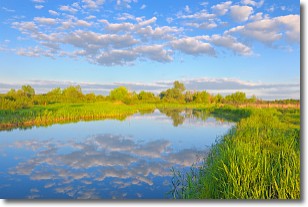Weather Alert in Washington
Fire Weather Watch issued July 11 at 8:24PM PDT until July 13 at 9:00PM PDT by NWS Spokane WA
AREAS AFFECTED: Methow Valley; Central Washington Cascade Foothills; Waterville Plateau
DESCRIPTION: ...HOT, DRY, WINDY SUNDAY AFTERNOON AND EVENING... .Hot and dry conditions will be in place on Sunday. Westerly winds will increase through the day across the East Slopes and into the Western Columbia Basin. There is a 30-50% chance for wind gusts of 30 mph or stronger along the ridgetops of the Cascades, into the foothills, and on to the Waterville Plateau. The National Weather Service in Spokane has issued a Fire Weather Watch for wind and low relative humidity, which is in effect from Sunday afternoon through Sunday evening. * Affected Area: Methow Valley (Zone 704), Foothills of Central Washington Cascades (Zone 705) and Waterville Plateau (Zone 706). * Winds: West 15 to 20 mph with gusts up to 30 mph. * Relative Humidities: 15 to 20 percent. * Impacts: Rapid fire spread is likely with any new fires.
INSTRUCTION: A Fire Weather Watch means that critical fire weather conditions are forecast to occur. Listen for later forecasts and possible Red Flag Warnings.
Want more detail? Get the Complete 7 Day and Night Detailed Forecast!
Current U.S. National Radar--Current
The Current National Weather Radar is shown below with a UTC Time (subtract 5 hours from UTC to get Eastern Time).

National Weather Forecast--Current
The Current National Weather Forecast and National Weather Map are shown below.

National Weather Forecast for Tomorrow
Tomorrow National Weather Forecast and Tomorrow National Weather Map are show below.

North America Water Vapor (Moisture)
This map shows recent moisture content over North America. Bright and colored areas show high moisture (ie, clouds); brown indicates very little moisture present; black indicates no moisture.

Weather Topic: What is Sleet?
Home - Education - Precipitation - Sleet
 Next Topic: Snow
Next Topic: Snow
Sleet is a form of precipitation in which small ice pellets are the primary
components. These ice pellets are smaller and more translucent than hailstones,
and harder than graupel. Sleet is caused by specific atmospheric conditions and
therefore typically doesn't last for extended periods of time.
The condition which leads to sleet formation requires a warmer body of air to be
wedged in between two sub-freezing bodies of air. When snow falls through a warmer
layer of air it melts, and as it falls through the next sub-freezing body of air
it freezes again, forming ice pellets known as sleet. In some cases, water
droplets don't have time to freeze before reaching the surface and the result is
freezing rain.
Next Topic: Snow
Weather Topic: What are Stratocumulus Clouds?
Home - Education - Cloud Types - Stratocumulus Clouds
 Next Topic: Stratus Clouds
Next Topic: Stratus Clouds
Stratocumulus clouds are similar to altocumulus clouds in their
fluffy appearance, but have a slightly darker shade due to their additional mass.
A good way to distinguish the two cloud types is to hold your hand out and measure
the size of an individual cloud; if it is the size of your thumb it is generally
an altocumulus cloud, if it is the size of your hand it is generally a
stratocumulus cloud.
It is uncommon for stratocumulus clouds to produce precipitation, but if they do
it is usually a light rain or snow.
Next Topic: Stratus Clouds
Current conditions powered by WeatherAPI.com




